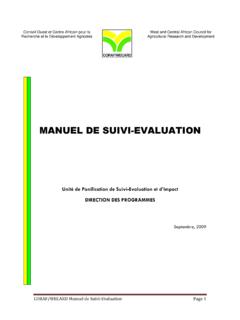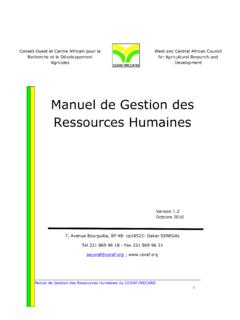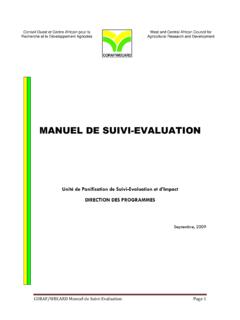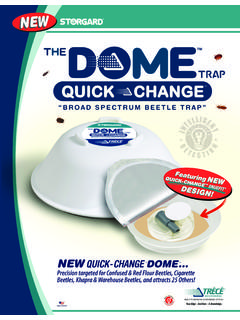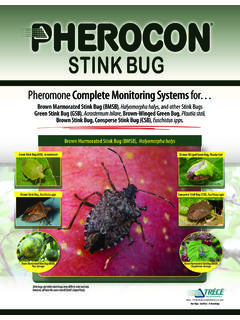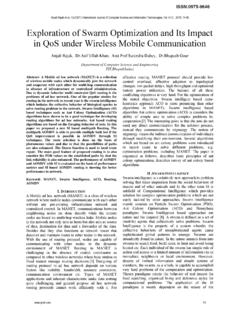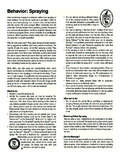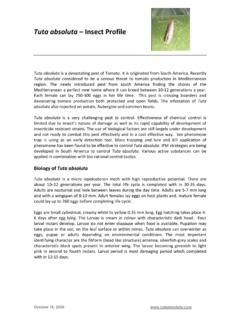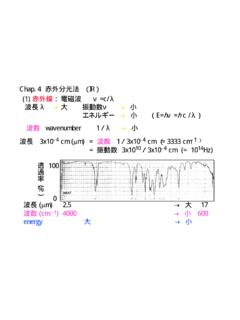Transcription of Tuta absoluta: the tomato leafminer - …
1 Tutaabsoluta: the tomato leafminerR. MuniappanDirector, Feed the Future Innovation Lab:Collaborative Research on Integrated Pest Management (IPM IL)Office of International Research, Education, and Development, Virginia TechTutaabsoluta(Meyrick, 1917 Family: GelichiidaeOrder: LepidopteraClass: InsectaPhylum: ArthropodaTutaabsoluta Described in 1917 by Meyrickas Phthorimaeaabsolutafrom specimens collected in Peru Gnorimoschemaabsolutaby Clarke 1962 Scorbipalpulaabsolutaby Povolny1974 Tutaabsolutaby Povolnyin 1994 Tutaabsoluta(Gelichiidae)Related Pest SpeciesTomato pinworm KeiferialycopersicellaGuatemalan potato tuber moth TeciasolanivoraPotato tuber moth PhthorimaeaoperculellaGroundnut leafminer -AproaeremamodecellaPink bollworm -PectinophoragossypiellaEggDuration.)
2 7 days Eggs are oval-Cylindrical, usuallyare laid on under side of Leaves, Buds, stems and calyx of unripe fruitsTutaabsoluta-Eggs Oviposition: Leaves -73% Veins and stems-21% Sepals-5% Fruits-1%LarvaDuration: 8 daysThere are 4 instars are white or Cream withablack head, later theyturn pink or grown larvaeDrop to the groundin a silken threadand pupate in soilPupaDuration: 10 daysPupae are brown, 6 mm long. Pupation takes place in soil or on plant parts such as dried Leaves and lives 10-15 daysMale lives 6-7 days Adult moths are smallBody length are brown or Silver color with Black spots on the wingsTutaabsoluta-Life Cycle Duration of life cycle: At 140C-76 days AT 200C-24 days At 270C-24 dayTutaabsoluta-Life Cycle Life cycle.
3 Multivoltine Twelve generations in a year Average 260 eggs laid by a female Larvae mine in the mesophyll of the leaf Four larval instars Pupates in the soil and sometimes in the leaves Prefers tomato but can complete in other solanaceousplantsTutaabsoluta Host plants Solanumlycopersicum( tomato ) Solanumtuberosum(potato) Solanummelongena(eggplant) Capsiumannuum(pepper) Nicotianatabacum(tobacco) Solanumnigrum Daturastramonium Solanumeleagnifolium PhysalisperuvianaTutaabsoluta Host plants Solanumbonariease Solanumsisymbriifolium Solanumsapponaceum Lycopersicumpuberulum Daturaferox Lyciumsp. Estabishment Spain2006 Morocco2007 Tunisia2008 France2008 Italy2008 Canary Islands2008 Algeria2008 Tutaabsoluta Estabishment Albania2009 Bulgaria2009 Netherlands2009 Portugal2009 United Kingdom2009 Bulgaria2010 Israel 2010 Hungary2010 Turkey2010 Serbia2010 Tutaabsoluta Estabishment Sudan2012 Ethiopia2012 Niger2012 Senegal2012 Predicted Spread of Tutaabsolutain West and Central Africa Predicted Spread of Tutaabsolutain East and Central AfricaTomato World production in 2009-152 M tons Production M ha Top 10 tomato producing countries China, , India, Turkey, Egypt, Italy, Iran,Spain, Brazil, and 2011, T.
4 Absolutainfested M ha of tomato cultivated area (22% of cultivated surface)Now it is a threat to Asia and Africa (South of Sahara)Nigeria has 5% of tomato cultivated in the worldTutaabsoluta Leaf damageTutaabsoluta Fruit DamageTutaabsolutain the CalyxEconomics of T. absolutaEstablishment In Spain, in the first year of introduction, pesticides were applied 15 times per season. The cost went up by 450 Euros per hectare. When T. absolutainvades rest of the World, the tomato pest management cost will go up by $500 M per of T. absolutaEstablishment Invasion is irreversible. Management requires coordinated efforts of research scientists, extension agents, and growers in invaded countries and those at of T. absolutaDetection -Pheromone trapsCultural control-removal of crop residues, alternate hosts, control-Biological control-Resistant varieties -Biopesticides-Management of T.
5 AbsolutaPheromone traps:Russell IPM is a leading mg and mg lures are mg is more effective45 males/trap action needed Brazil100 males/trap action needed-ChileManagement of T. absolutaSouth America: Chemical control In 1970s -Pyrethroidsused In 1980s -Cartapused In 1990s Cartapalternated with Pyrethroids In early 2000 Ten new molecules of PyrethroidsusedBiological control:Classical biological controlAugmentative biological controlConservation biological controlManagement of T. absolutaClassical biological controlHigh success rate with invasive speciesPapaya mealybugcontrolCassava mealybugcontrolSpiraling whitefly controlMango mealybugNot yet found a silver bullet for T. absolutaManagement of T. absolutaAugmentative biological controlUsed against native and invasive of T.
6 Enemies of T. absoluta (Mediterranean)Augmentative biological controlTrichogrammaacheaeis used in Spain at the rate of 750,000 adults/hectare every 3-4 of T. absolutaNematodessHeterorhabditisbacteri ophoraSteinernemafeltiaeNatural enemies of T. absoluta (Mediterranean) enemies of T. absoluta (Mediterranean)Egg ParasitoidsTrichogrammaspp. enemies of T. absoluta (South America)Larval enemies of T. absoluta (South America) enemies of T. absoluta (South America)PredatorsOnly casual observations on generalist predators such as spiders, carabids, earwigs, hemipterans, wasps, ants, lace wings have been enemies of T. absoluta (South America)Predators collected by Europeans: van enemies of T. absoluta (South America)Conservation biological control Avoiding use of chemical pesticides Useof biopesticidesthat have less or no adverse impact on natural enemies Adoption of biological controlManagement of T.
7 AbsolutaBiopesticides: Bacillus thuringiensisformulations Beauveriabassianaapplications Nucleopolyhedrosisvirus Nucleogranulosisvirus NeemformulationsManagement of T. absolutaCombinations: Btand neem B. bassianaand neem Nucleopolyhedrosis(NPV) and neem Granulosisviursand neem Btand NesidiocorisManagement of T. absolutaIPM for tomato Seed or seedling treatment with Trichoderma, Pseudomonas,and Bacillus subtilus Solarization of seed beds and in greenhouses Use of VAM, neem cake, and other organics Use of virus disease-resistant varieties Grafting on resistant rootstock for bacterial wilt, cork root disease, and others Staking and mulching Yellow sticky traps for thrips, leafminers, etc. Pheromone traps and use of NPVs for tuta , Heliothisand Spodoptera Host free period and roguingfor control of virus diseasesComponentsWhat need to be done in this region?
8 Establish a Tutamonitoring program Establish international quarantine regulations Establish national quarantine regulations When Tutaestablished: conduct survey of local natural enemies recruited by it; identify effective ones; publish of T. absolutaWhat need to be done in this region? Take up Classical, Augmentative and/or Conservation Biological Control. Develop an IPM. Integrate it with IPM package for of T. absoluta
